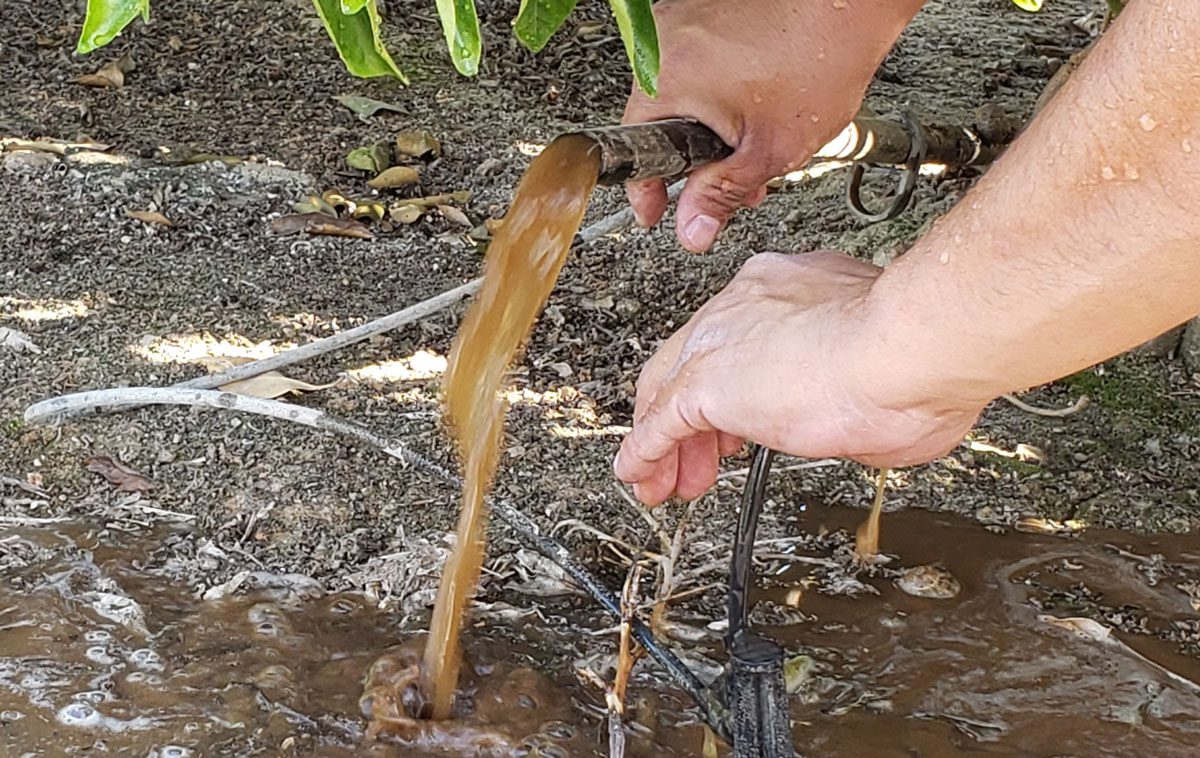
When it comes to irrigating tree nuts with subsurface irrigation, you have to have the mindset to make it work, and it has to be maintained, said Silas Rossow, president of Cal Ag Solutions in Merced.
“Being proactive, flushing regularly, will add years to the life of the system,” Rossow said.
Subsurface drip systems deliver a low-pressure water source in orchards and field crops with buried drip tape or hard tubing with built-in emitters.
Subsurface drip is a good tool and can save water, but it is not an easy solution to irrigation efficiency, Rossow said.
“You have to change how you look at management of the system.”
Although subsurface irrigation has been used since the 1960s, it is not widely used in orchards. There have been changes in system design to adapt to orchard use. The tape or tubing is now buried closer to the soil surface and placed farther away from the tree row. Repellants are available to keep rodents from chewing the lines. Advantages include less water loss due to evaporation or deep percolation. Subsurface systems are much less likely to be damaged by harvest equipment.
Rossow said the systems are normally installed in mature orchards. They can be designed to deliver water much like surface drip systems, and cover long runs and large zones, but there may be limitations with soil types and water quality. Heavy or sandy soils will need to be managed differently with run hours, distance from tree and flow rate adjusted to soil type. The pH of poor-quality water will have to be corrected and care taken to balance nutrients delivered through the system.
Difficulties encountered with these systems can be overcome, Rossow said. After installing a subsurface system in a mature almond orchard in January 2016, he said all indications were that the system was working as it should. In the spring, fertigations were done and no ponding was observed. The challenge came in June when tree water use increased. When the trees began really pulling hard and chasing the water, Rossow said, they found that in the stressed areas of the orchard, root intrusion into the emitters was occurring. It was a learning experience, he said, and they found adding copper sulfate kept the emitters open.

Cecilia Parsons
Cecilia Parsons has lived in the Central Valley community of Ducor since 1976, covering agriculture for numerous agricultural publications over the years. She has found and nurtured many wonderful and helpful contacts in the ag community, including the UCCE advisors, allowing for news coverage that focuses on the basics of food production.
She is always on the search for new ag topics that can help growers and processors in the San Joaquin Valley improve their bottom line.
In her free time, Cecilia rides her horse, Holly in ranch versatility shows and raises registered Shetland sheep which she exhibits at county and state fairs during the summer.















